Sushi etiquette: What a sushi master wants you to know
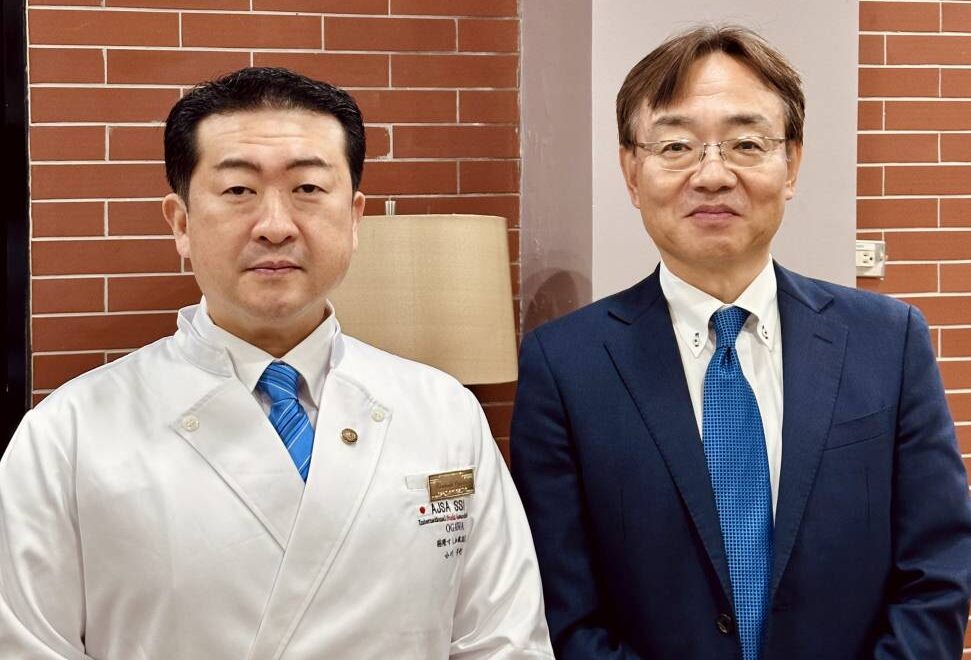
It takes a lifetime to be a very good sushi chef.
That’s according to World Sushi Skills Institute director general and internationally renowned sushi master Hirotoshi Ogawa, whose career began in 1994.
He recently visited Manila to hold a three-day seminar at Enderun Colleges in Taguig City for a limited number of participants.
Hosted by Japan External Trade Organization (Jetro) with Sanriku and Hightower Inc., the seminar was designed to elevate sushi-making standards in the Philippines by imparting cultural insights into the art as well as advanced techniques.
A pioneer in the sushi world, Ogawa shared his expertise in sushi preparation, food safety, and presentation that has gained him global recognition. As culinary adviser to the Japanese government, the founder of Ogawa Sushi in Tokyo likewise advocates for Japanese cuisine across more than 40 countries.
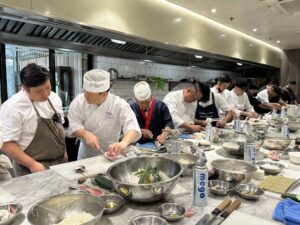
In cooking schools in Japan, three months of training would earn anybody a certificate and the title of sushi chef. But Ogawa insists it doesn’t end there. “You still have to keep learning and brush up on your skills and techniques. I’ve been a sushi chef for 32 years, and yet I still study. I’m still training,” he said.
This is because the most important thing for a chef, according to him, is to make the customers happy. And when it comes to sushi, everyone has their own preferences.
For such a simple-looking dish—which essentially boils down to seasoned shari (rice) and neta (toppings)—there can be hundreds of permutations for making sushi.
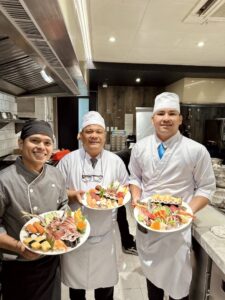
Of course, with recipes, ingredients, and some modern tools like shapers now freely accessible, most anybody can make passable sushi right in their homes. But to make really good sushi is a whole different matter.
Sushi is 60-percent shari and 40-percent neta, so it is imperative to properly cook the rice. Different types of rice (there are about 500 in Japan) combined with different conditions and setups (like different types of water, different types of rice cookers, different voltages, etc.) would yield different results.
But the key is to use short-grain rice (short-grain rice like Japonica is ideal) and to put air in when shaping the nigiri (hand-pressed sushi).
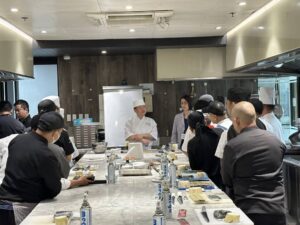
Hundreds of toppings
Similarly, there are hundreds of different types of toppings, one of the more popular of which is fish.
Using the right knife properly comes in handy, but Ogawa gave a reminder to always check for freshness: The color of the eyes should be clear, not cloudy or red; the flesh should bounce back when poked; the gills should be clean as well.
The ideal temperature for preserving fish outside of Japan is 4 degrees Celsius, he said. Past 10 C will cause bacteria and germs to grow.
Categorized into white, shiny, or red, fish will have different textures and tastes, depending on the environment and how they lived. Those that swim long distances, for example, will be leaner, while those that stay in the same area will tend to be fatty.
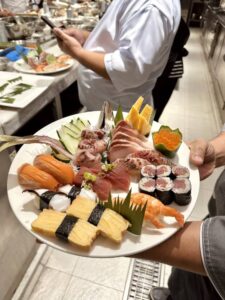
Customers’ palates also change through the years. According to Ogawa, nobody wanted to eat uni (sea urchin) 30 years ago.
Similarly, when he served salmon Edomae sushi (the contemporary form of sushi) in his restaurant when he was just starting out, he was greatly criticized for doing so. Five or six years later, his neighbors who scolded him back then have also started serving salmon sushi. “And there might be other fish that we haven’t even discovered yet.”
But for those just wanting to make their own sushi at home, Ogawa suggests the temaki-style sushi, which is hand-rolled nori (seaweed sheet), sushi rice, and any topping of their choice.
Ogawa, who has been eating sushi every day for the past 32 years, said he has yet to get tired of the dish. Perhaps, he said, it’s the sourness that turns into umami inside the mouth. Perhaps, because he’s also getting older, he craves the lightness of the dish. “I still cannot get enough of it.”
Shying away from talking manner or etiquette when it comes to eating sushi, Ogawa said to eat however one likes to eat it. If that means dipping the sushi in a lot of soy sauce, so be it—“as long as you are mindful of the other customers.”
One way to do this is to not wear strong perfume or cologne, which may affect other people’s experience in the restaurant. Otherwise, “if you don’t know how to properly eat sushi, you can always ask for advice from the chef.”

Bottom line is safeness
Not everyone appreciates sushi, however, with those unfamiliar and unwilling to try wary of eating raw fish.
Asked if he feels the need to accommodate these non-sushi-lovers’ tastes as well, Ogawa answered: “Mochiron desu ne (of course). The important thing is that the customers say it’s delicious.
“It’s definitely important to make changes so that we’ll be more appreciated and accommodate more people. So if the customers are scared of trying raw fish, I can just torch or cook the sushi, and then maybe after they try it, they might like it. The bottom line is the safeness of the food.”
He also welcomes fusion and experimentation. “I think it’s amazing how it’s spreading and evolving outside of Japan. So I think it’s more important for us to welcome the popularity of sushi and appreciate those changes over time.
“Maybe it’s okay to see lechon sushi or lumpia sushi using local ingredients,” he added. California roll has actually become wildly popular albeit drawing a lot of flak before.
Ogawa himself has created anime-themed sushi before, and an “astonishing” sushi cake made of fruits and cream, which he said might earn him a scolding from the Japanese people. But according to him, the transition to narezushi or traditional sushi using salt-pickled fish and lactic acid-fermented rice, and then nigiri sushi, came about only around 500 years ago anyway, and gunkan or rolled sushi with nori has only had about 80 years of history.
However, funazushi, an ancient type of sushi that is fermented for two years and prepared near Lake Biwa, is still being served in Japan. “We have to preserve its tradition.”
What he means by that is not only the recipe or the technique, but also the relationship between the chef and the customer. “The nigiri sushi is a heart-to-heart action between the sushi chef and the customer over the counter,” he explained, lamenting the younger generation’s refusal to engage in interactions with chefs and instead preferring to push buttons on a machine and get their orders via conveyor belt.
“There are pros and cons with kaiten sushi (aka conveyor belt sushi or sushi trains)—it’s reasonable, and everybody can enjoy it; it’s user-friendly and convenient,” he said. Still, he feels sad about what’s happening right now. “The sushi chef making the sushi with his own heart and then serving the customer—that’s the tradition.”

















